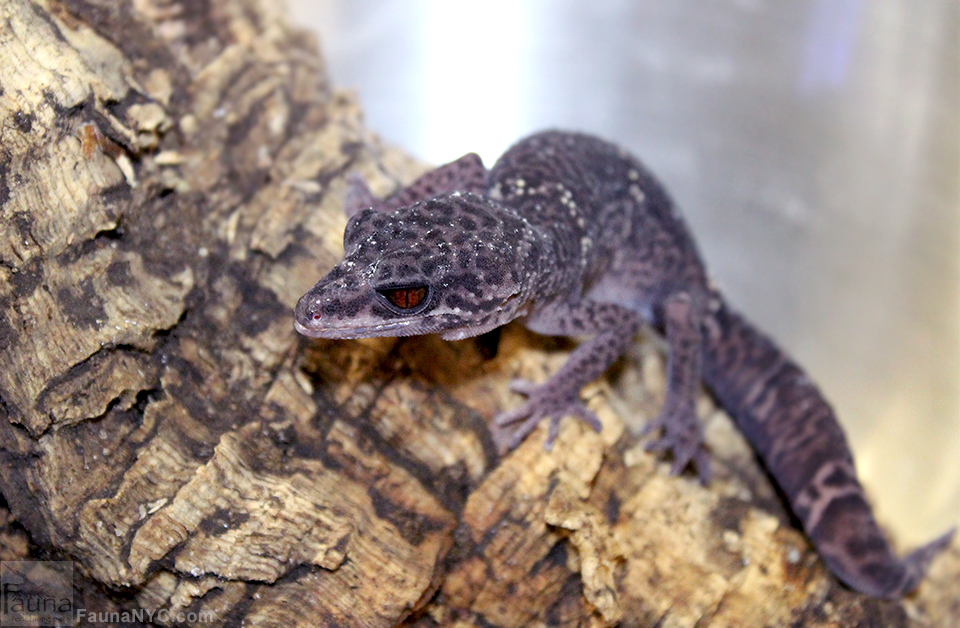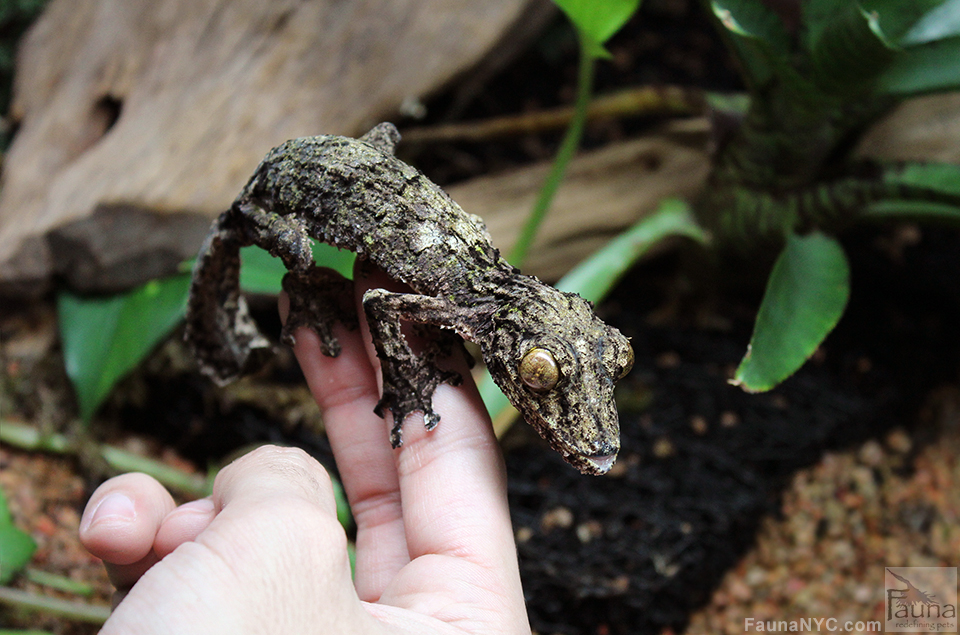

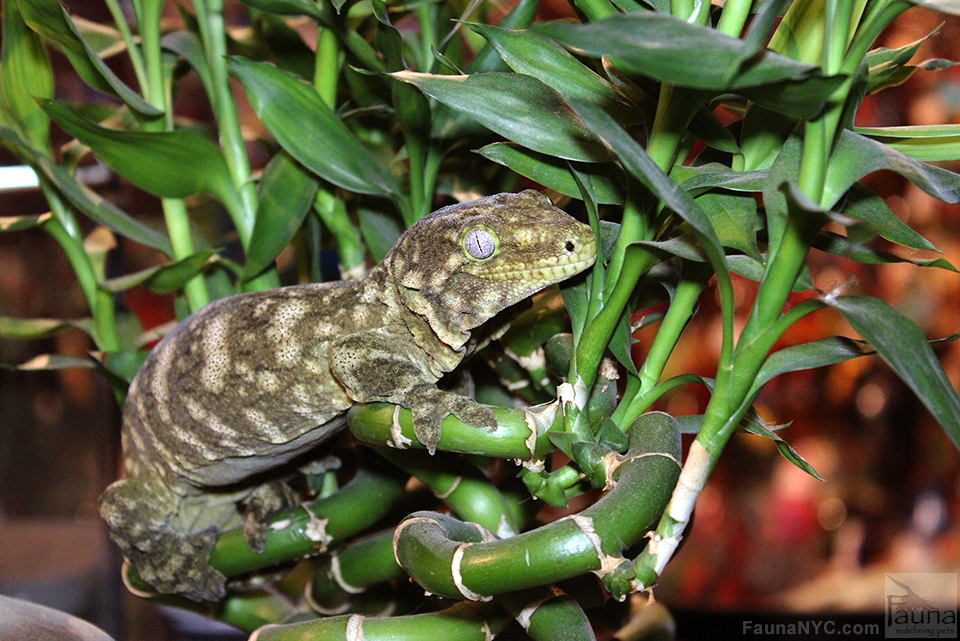
New Caledonian Giant Gecko (Rhachodactylus leachianus)
New Caledonian Giant Gecko (Rhachodactylus leachianus) Fauna ReptilesReptiles Home Featured in Reptiles Snakes Lizards Amphibians Tortoises Reptile Boarding New Caledonian Giant Gecko (Rhachodactylus leachianus) Kahleachi, our leachianus gecko, has grown up quite a bit since we first got her. She is just about ready to find a boyfriend! This is Kahlechi when she was a yearling. She is a New Caledonian Giant Gecko (Rhachodactylus leachianus). R. leachianus (commonly called leachies) come from the New Caledonian Islands off the eastern coast of Australia, north of New Zealand. This small island has a number of even smaller islands surrounding it and are each highly biologically diverse. Many of the individual islands have their own unique species or local specific characteristics. Our leachie’s heritage is from the tiny Isle of Moro, located southwest of the main island Grande Terre. Leachies are currently known as the largest living gecko in the world. This locale of leachianus is one of the larger of all the locales reaching a size of up to 13 inches. Like other Rhachodactylus species she is nocturnal, camouflages extremely well, can climb vertical surfaces and has a prehensile tail. Leachies have very loose fitting, soft velvety skin. Once you hold one you will be mesmerized! In captivity they eat a prepared powdered Rhacodactylus gecko diet and insects on occasion. Housing can be rather simple and they typically do well at average room temperatures, not requiring additional heating. When available, leachies can make fascinating, easy to care for pets. If deciding to have a leach of your own be prepared for a long-term pet as they are known to live up...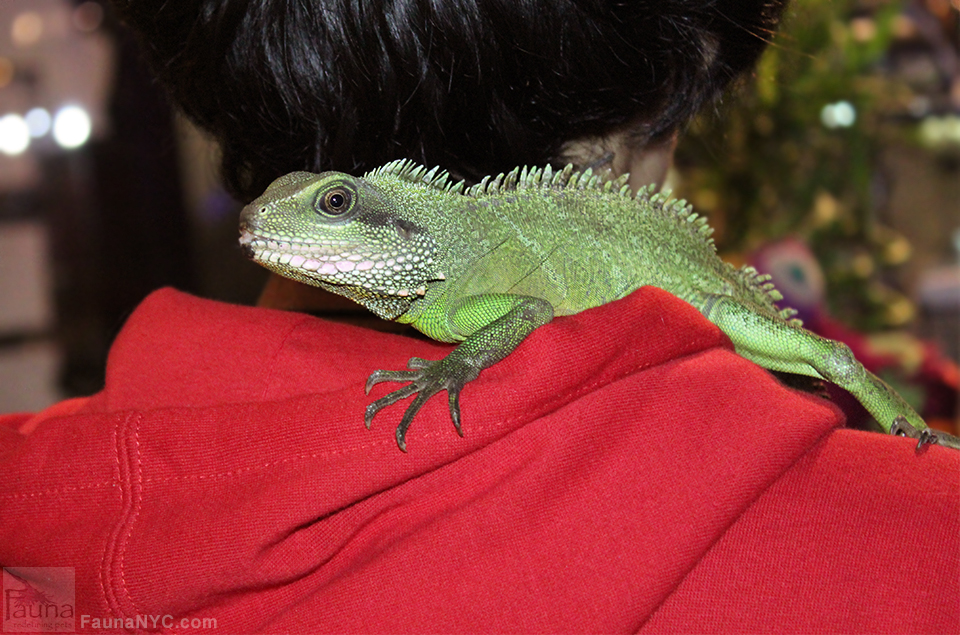
Water Dragon
Water Dragon Fauna ReptilesReptiles Home Featured in Reptiles Snakes Lizards Amphibians Tortoises Reptile Boarding Water Dragon Ivan makes for a good resting spot for this water dragon. Water dragons are often sold as “starter” reptiles in many stores, but sadly are most often wild imports. They have very specific care and housing requirements that most people just can not provide. This one came in to us as a rescue and is available for adoption to the right...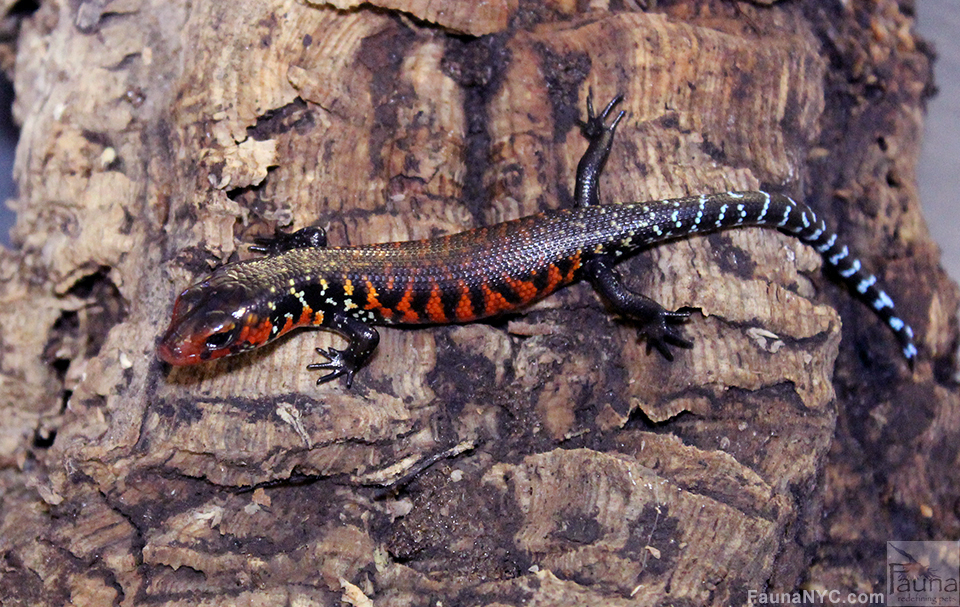
Fire Skink
Fire Skink Fauna ReptilesReptiles Home Featured in Reptiles Snakes Lizards Amphibians Tortoises Reptile Boarding African Fire Skink This is one of Fauna’s African fire skinks! They have beautiful red streaks down the sides of their face and body and are very friendly. Although a diurnal species, fire skinks enjoy plenty of substrate to burrow in and rarely climb. Because of this, wider cages are often better than taller ones. Here is one of the fire skinks we recently hatched at Fauna. This species is commonly seen as imported in the pet market, but rarely ever captive...